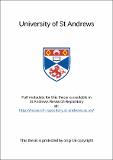Transition region blinkers
Abstract
Blinkers are small intensity enhancements seen in the transition region of the solar atmosphere. They are important because they give us a unique insight into the transition region which until recently, has not been studied in much detail. An automated method of identifying blinkers is presented and used to identify blinkers in the quiet Sun and active regions from SOHO/CDS O V data. The general properties of the blinkers are discussed. They have typical areas of 3 x 10⁷ km² and lifetimes of 16 minutes. Their typical global frequency and intensity enhancement factors in the quiet Sun are 7s ⁻¹ and 1.8, respectively, whereas these values increase in active regions to 13s⁻¹and 2.4. Blinkers are best seen in the O V (629Å) transition-region line, but they also have strong signatures in O IV (554Å), and the chromospheric line, He I (584Å). The strongest O V blinkers can also be identified in O III (599Å). No significant signatures are found in the coronal lines Mg IX (368 Å) and Mg X (624 Å) for quiet Sun blinkers, but some increases can be seen in active-region blinkers. The ratios of the oxygen lines in blinkers were found to be flat confirming the result that blinkers are not temperature events, but are either density enhancements or increases in filling factor. Blinkers appear to occur preferentially over regions of enhanced chromospheric, transition region or coronal emission such as network boundaries. The plasma velocities of the O V blinkers and the chromosphere below have been studied. The Doppler and non-thermal velocities found are preferentially more red-shifted and greater than the normal chromospheric and transition region plasma, respectively. The ranges of these enhanced velocities, however, are no larger than the typical spread of Doppler and non-thermal velocities in these regions. Analysis of the magnetic field below blinkers shows that blinkers preferentially occur above regions of large or strong magnetic fragments with 55% of quiet Sun and 50% of active-region blinkers occurring in regions where one polarity dominates. Active-region blinkers are found above both active-region (plage) magnetic fields, as well as above the umbra and penumbra of sunspots. There appears to be no correlation between the strength of these single polarity magnetic fields or the ratio of mixed magnetic fields beneath blinkers and blinker characteristics. Furthermore, following a comparison of explosive events and blinkers, only one case is found where the two phenomena are coincident. Initial probability analysis suggests that the hypothesis that explosive events occur independently of blinkers cannot be ruled out.
Type
Thesis, PhD Doctor of Philosopy
Collections
Items in the St Andrews Research Repository are protected by copyright, with all rights reserved, unless otherwise indicated.

